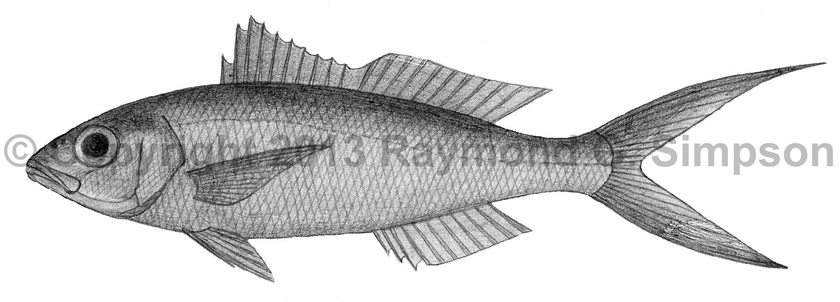
Common Name
Queen Snapper
Year Described
Valenciennes, 1828
Identification
Dorsal Fin: X, 10-11 (usually 11)
Anal Fin: III, 8
Pectoral Fin: 15-16
Gill Rakers: 7-11 upper, 14-18 lower; 23-28 total
Lateral Line Scales: 47-50
Body elongate and moderately compressed. Interorbital region flat. Upper and lower jaws with a row of conical teeth. Anterior teeth enlarged. Vomerine teeth in a chevron-shaped patch. Palatine teeth an elongate band. Ectopterygoid teeth absent. Soft dorsal and anal fins without scales. Maxilla with scales. A distinct notch between spiny and soft dorsal fins. Last dorsal ray longer than the one anterior to it. Caudal fin forked with filamentous extensions (upper lobe produced in larger specimens).
Color
Dorsum bright red to pink, becoming silvery pink on the sides and white on the belly. Eye red. Dorsal and caudal fins red to pink. Other fins pale pink.
Size
Maximum size to 70cm TL. Commonly to 50cm TL.
Habitat
Deep continental shelf waters from 135-450m, over hard bottoms.
Range
North Carolina to Brazil, including the Gulf of Mexico and the Caribbean Sea. Also Bermuda.
References
Anderson, W.D. 2002. Lutjanidae (pp. 1479-1504). In: Carpenter. 2002. The living marine resources of the Western Central Atlantic. Vol. 3: Bony fishes part 2 (Opistognathidae to Molidae). FAO Species Identification Guides for Fisheries Purposes. American Society of Ichthyologists and Herpetologists Special Publication No. 5. FAO of the U.N., Rome.